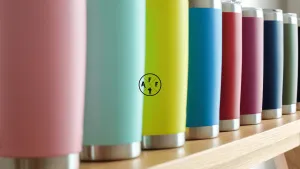
Having a phone that can also double as a fish finder can be a real game-changer for anyone who loves fishing. Several phone apps on the market promise to do just that, so we decided to look at three of the most popular ones.
This blog post will look at the current premier smartphone fish finder in the Deeper Pro and give some clever tips from people who have used them.
What you need to know about phone fish finders
It was once just a dream that you could use the phone in your pocket as a fish finder rather than spending thousands of dollars. But now, that is a reality, although you still need a low-cost investment in a small sensor that will fit in your pocket.
Connecting directly to your phone, these sensors and their associated apps allow you to use your smartphone as a fish finder simply and easily. Although, they don’t yet have the functionality of top-of-the-line options like Humminbird or Lowrance. These are ideally suited for inshore anglers who don’t need as much information but want to find the closest drop-off or select the right lure for their position from the bank.
How to turn your phone into a fish finder
Several products provide sensors to turn your phone into a fish finder. They all rely on an external sonar transducer that transfers data via Bluetooth to your smartphone. The transducer comes with a floating pod designed to be cast into the location you are looking to check – these fish finders are best suited for kayak anglers or from shore, not for a constantly moving boat.
The app then takes this sonar data and presents it in exciting and unique ways to see the depth, contours of the land, and any fish that are present.
Deeper Fish Finder Pro – this was the first smartphone fish finder released to the market and, in my opinion, is the best available. The premier options even have CHIRP sonar (Compressed High-Intensity Radar Pulse).
There are also some competitors in the market with the Garmin Striker Cast and the Lowrance FishHunter Pro that you might be interested in learning more about.
How to use your phone as a fish finder
Once your sensor is purchased and the app downloaded, you can start using your new fish finder. Before fishing, make sure you can connect between your transducer and your phone – this is done via Bluetooth or Wi-Fi. You can also change any settings you might need and register to save your data to the cloud to be viewed later.
Then set up a long casting rod with a heavy fishing line and clip that to your transducer. This will be how you can cast it to your target location. Depending on the wind and the current, you may need to retrieve and recast.
You can use these types of transducers in a small boat, but you will need a mounting system – which could be a fish rod sitting in a rod holder. But I would suggest you bring it in when moving as they don’t appear to work very effectively when the boat is moving.
Make sure you keep a close eye on your transducer’s battery and bring spares or chargers if you are going on multi-day fishing trips. You will also have to keep track of your smartphone’s battery – you need both devices powered up to work correctly. Once you understand how much better your fishing will become, you won’t want to fish without it.
Tips for getting the most out of your phone fish finder
- If you are casting your transducer with a fishing rod, make sure you use a heavy-duty fishing line that won’t break if it accidentally touches any structure. The last thing you want is to lose your new transducer because you cast too close to a pier.
- The great use of a fish finder is to check whether there is any fish present or whether they don’t like the bait you are using. If you cast out your transducer, pull out your phone, and see plenty of fish in that area, it is a good bet to change up your lure until you start getting strikes.
- Use the fish logging system in the app – this helps you track your catches and, over time, allows you to build up a database that you can interrogate later to find patterns that can help improve your fishing time.
- Take some time to learn how to read your fish finder. There is both an art and science of interpreting sonar patterns. Beginners often get confused between a single fish swimming fast and many fish because they can often pose similar patterns within the sonar’s cone.
Conclusion

Until this technology was released, it was almost impossible for a shore-based angler to understand where they were fishing – at least without wading out and checking personally. There could be all kinds of drop-offs, underwater structures, and fish habitats in your favorite fishing spot that you have no idea even exists.
Take the chance to significantly improve your fishing and give a castable fish finder a go.










